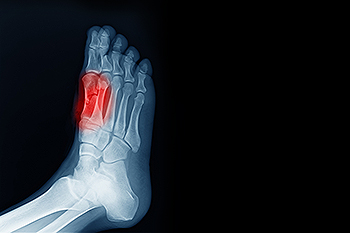Sesamoiditis: A Sports Injury That Affects the Ball of the Foot
Tuesday, 09 August 2022 00:00
A sesamoid bone is independent, typically embedded in a muscle and connected to a tendon. There are sesamoids throughout the body such as the hands, wrist, feet, and kneecap which is the largest sesamoid. There are two sesamoid bones in the feet that are tiny, pea-shaped bones that are embedded in tendons in the ball of the foot. They are situated underneath the big toe joint. Repetitive stress in the ball of the foot can cause the sesamoids and the tendons in which they are embedded to become painful and inflamed. This condition is known as sesamoiditis. Although sesamoiditis can affect anyone, it often occurs in dancers and athletes who run and play tennis, basketball, and football. If you believe you may have sesamoiditis, consult with a podiatrist who can diagnose your condition through an examination and various imaging tests, and treat the condition using a variety of methods.
Sesamoiditis is an unpleasant foot condition characterized by pain in the balls of the feet. If you think you’re struggling with sesamoiditis, contact Dr. Anna Petrov of Family Foot & Ankle Care. Our doctor will treat your condition thoroughly and effectively.
Sesamoiditis
Sesamoiditis is a condition of the foot that affects the ball of the foot. It is more common in younger people than it is in older people. It can also occur with people who have begun a new exercise program, since their bodies are adjusting to the new physical regimen. Pain may also be caused by the inflammation of tendons surrounding the bones. It is important to seek treatment in its early stages because if you ignore the pain, this condition can lead to more serious problems such as severe irritation and bone fractures.
Causes of Sesamoiditis
- Sudden increase in activity
- Increase in physically strenuous movement without a proper warm up or build up
- Foot structure: those who have smaller, bonier feet or those with a high arch may be more susceptible
Treatment for sesamoiditis is non-invasive and simple. Doctors may recommend a strict rest period where the patient forgoes most physical activity. This will help give the patient time to heal their feet through limited activity. For serious cases, it is best to speak with your doctor to determine a treatment option that will help your specific needs.
If you have any questions please feel free to contact one of our offices located in Wheeling and Chicago, IL . We offer the newest diagnostic and treatment technologies for all your foot and ankle needs.







